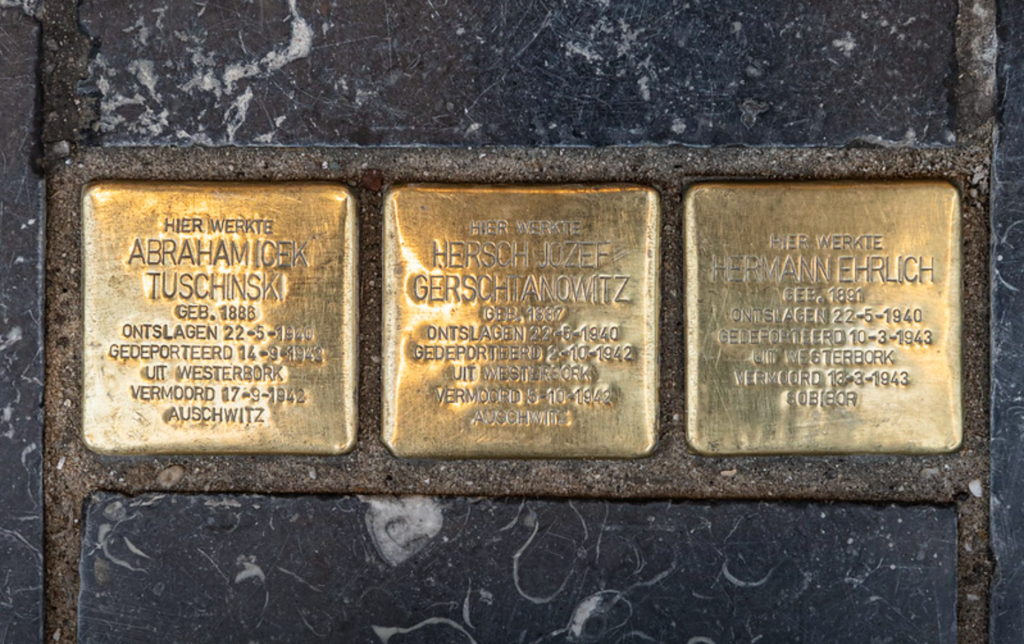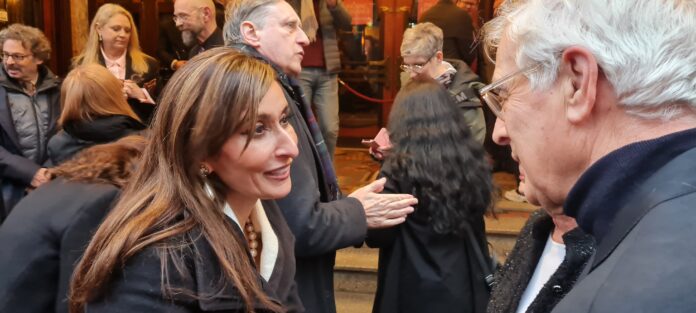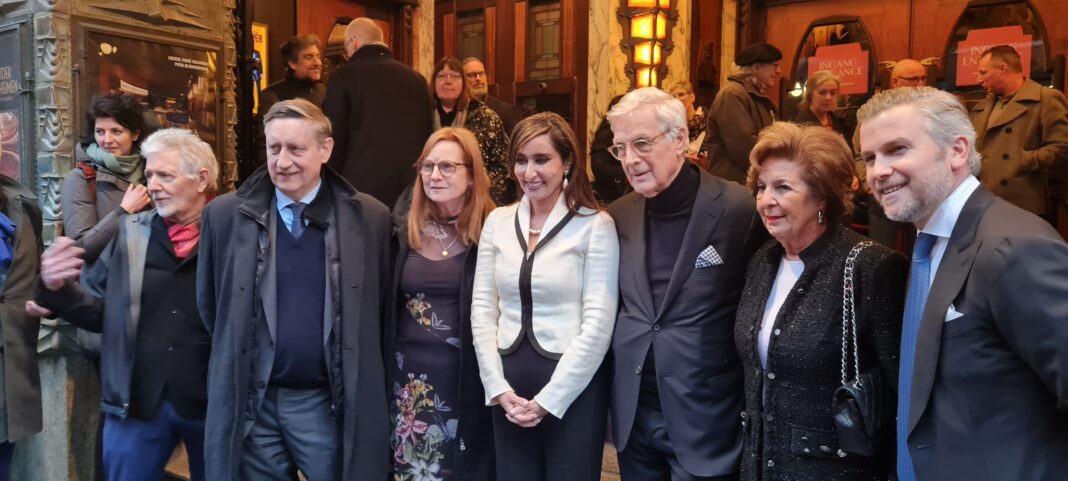The premiere of “Here Lived,” hosted by the Ambassadors of the USA, H.E. Ms. Shefali Razdan Duggal, and Germany, H.E. Dr. Cyrill Nunn in Amsterdam, marked a touching moment of remembrance, reflection, and resilience. Held at the prestigious Royal Tuschinski Theater, the event not only commemorated the lives lost during the Holocaust but also celebrated the enduring legacy of Gunter Demnig’s Stolpersteine project.
Before the screening of the film, a solemn memorial took place outside the theater, where three Stolpersteine were laid in memory of Abraham Tuschinski, Hermann Gerschtanowitz, and Hermann Ehrlich, the original owners of the theater. Tuschinski and Gerschtanowitz were deported to Auschwitz, and Ehrlich to Sobibor; all three were murdered by the Nazis in 1942. These individuals, like millions of others, fell victim to the atrocities of Nazi persecution during World War II, highlighting the deeply personal and widespread impact of the Holocaust.

After the placing of the stones, ambassadors invited guests for a drink during a small gathering in advance of the Netherlands premiere screening of Here Lived.
During his speech, H.E. Dr. Cyrill Jean Nunn cited the book “The Pity of All That” by Amos Elon, which reflects on 1,700 years of rich Jewish history in Germany, despite the atrocities that occurred between 1933 and 1945. He also mentioned the Jewish cemetery in Weissensee in Berlin, where a monument honors some of the 12,000 Jewish soldiers who died during World War I in the ranks of the German army.
“The commitment of every German government since WW II towards Israel is resolute and permanent. It is based on the necessity to look at the mirror of our history, without blinking, in order to see the past in its unvarnished truth. There is no alternative for us, definitely for us in Germany, than to know our history, to confront ourselves with it and to continue to learn the necessary lessons for today and for the future.”
In Berlin, often in front of old buildings, the sidewalks are literally plastered with Stolperstein. “At the beginning of the 20th century, Berlin had a population of 300,000 German citizens of Jewish faith and is therefore one of the cities in Europe with the biggest number of “Stolpersteine”.”
“In Europe, the “Stolpersteine” are becoming more and more visible. For instance, in Berlin and also here in Amsterdam, they remind us every day of the fate of our fellow citizens who were taken out of their daily life and killed for no other reason than to be a member of the Jewish community.”
“Around the corner of our house in Berlin in Charlottenburg, there are exactly 13 “Stolpersteine” placed on the sidewalk. Like so many people, I got familiar with the engraved names. By now I have established a sort of bond with them and my thoughts go to them every time I pass by. The stones are kept shiny by the new inhabitants of the buildings. This is perhaps our way to try to reintegrate them into a place where they had been living for a long time before being chased and murdered 80 years ago.
“We are therefore thankful to Günter Demnig for his work. Thanks to him, and so many volunteers all over Europe, some of whom are here today, our former neighbors have not vanished from our memory. They enjoy the respect of today’s inhabitants who know that in our society there is absolutely no place for anti-Semitism, racism, or other forms of discrimination. Allow me to conclude by thanking Jane Wells, her team, and everyone who contributed to the film that we will soon watch together.” Said Ambassador Nunn.
“Here Lived,” produced and directed by Jane Wells, delves into the profound story behind the Stolpersteine project. What began as a humble idea by conceptual artist Gunter Demnig has evolved into the world’s largest decentralized memorial, with tens of thousands of Stolpersteine laid across Europe. These small brass plaques, embedded into the pavement outside the last known residences of Holocaust victims, serve as a powerful reminder of the human lives extinguished by Nazi terror.

The film explores the untold stories of hidden children who evaded capture by the Nazis, as well as the courageous individuals who risked their lives to shelter and protect them.
Through interviews with survivors, descendants, volunteers, and politicians, “Here Lived” paints a vivid picture of resilience, love, and collective healing in the face of unimaginable tragedy.

One of the film’s central themes is the importance of remembering and honoring the lives lost during the Holocaust. By saying their names and sharing their stories, the Stolpersteine project ensures that the victims are never forgotten, reaffirming the commitment to combating anti-Semitism, racism, and intolerance in all its forms.
Set against the backdrop of rising nationalism and xenophobia in Europe and beyond, “Here Lived” carries a timely and profound message of solidarity. The premiere of “Here Lived” in Amsterdam serves as a powerful reminder of the enduring power of art, storytelling, and community in preserving the memory of the past and shaping a more just and compassionate future.



